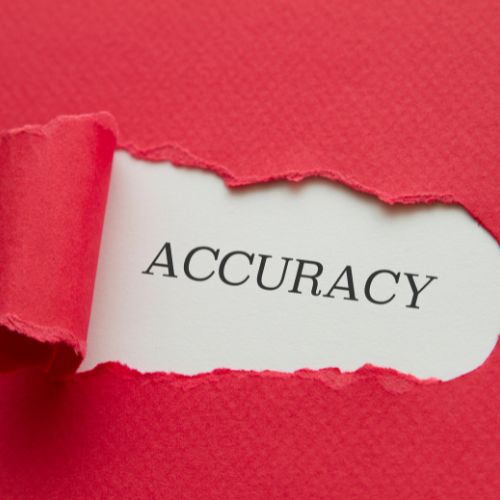You know that your asset register needs to be completely accurate. However, it’s likely that you also know this is easier said than done. The good news is that it’s entirely possible to keep your register accurate. This is regardless of what asset register format you use. You can have a register that tracks all of your assets and provides you with the data you need. What’s more, is you can have this without you having to do much at all.
Let’s take a look and see how you too can have an accurate register.
Say “Goodbye” To The Old Ways Of Doing Things
One of the first things that you need to do is say “Goodbye” to old ways of tracking assets. Stop using those inaccurate spreadsheets, notebooks, files, and any other manual format. It’s very likely that these formats are inaccurate, incomplete, and doing your business a disservice.
Now it’s time to use a digital asset register format you can rely on. Digital asset registers and trackers are likely to be much more accurate.
We humans tend to make mistakes from time to time, even when we have the best intentions. The good news is that technology does not. As a result, you can enjoy having an asset register that’s accurate now and in the future. A consequence of this is that your business could perform better as you have more accurate data. This is never a bad thing.

Learn To Trust Technology
Now is the time for you to start trusting technology. These days, tracking tools are made to be easy to use, reliable, and incredibly helpful. Depending on the asset register format and software you choose, you don’t have to be a tech wizard to use it.
Look for an asset register format/software that you like the look of. Opt for something that seems uncomplicated. There should not be a million menus and it should be clear what each menu leads to. Choose some software that has a good reputation and is updated frequently. When you do, you know that you can trust it to track your assets for you.
Add Everything To Your Chosen Asset Register Format
Once you have trialled some software it’s now time to start adding your assets to your new register. Ideally, you will already have some QR codes, barcodes, or RFID tags to attach to each of your assets. Once you have added a code, for example, to an asset, you can scan it. This will create a digital profile and allow you to input details about the asset. Once you’ve done this, you can move on to the next one. Do this for all of the assets that you want to track. The more assets you add, the more accurate your asset register will be.
Start Tracking Your Assets And Begin Creating Accurate Data
Start tracking your assets today using your chosen asset register format. Locate them with ease and retrieve your assets whenever you need to. Create data that shows which assets are used more often than others.
Use the data to discover where you need to send more machinery. Find out which assets are in a poor state of repair by allowing users to leave notes. Assign assets to individuals or groups so that work can be completed. Improve security by making everyone check assets in and out.
Use the data that is automatically created to help you run your business. Some tracking software allows you to export reports. These reports are full of the data that’s been created each time an asset is used. As a result, you have reports that can help you to understand your business in new ways. You could see that it’s excelling in one area and underperforming in another. You could see which assets are used more than others and which ones need replacing. There is so much data for you to create and potentially so many reports for you to read. The latter may not seem amazing, but those reports could help you to make better business decisions.
Keep Your Asset Register Up To Date
So, you’ve been tracking your assets for a while, but is everything up to date? Have you added any new assets to the system? If you haven’t you’re doing yourself a disservice. Add all of those new assets today so you can track their location and create data. Each time you gain a new asset, add it to the register. You can also keep your register up to date by setting up a maintenance schedule and removing assets you no longer use. This will help to keep everything in check and ensure your register is accurate.
Would you like to chat with someone who is knowledgeable about using an accurate asset register format? Contact us now at team@itemit.com.
The Easier Way To Ensure Asset Register Accuracy
Choose a better way to track your assets
Start your free 14-day trial now
Instant access. No credit card details required.
Related articles

